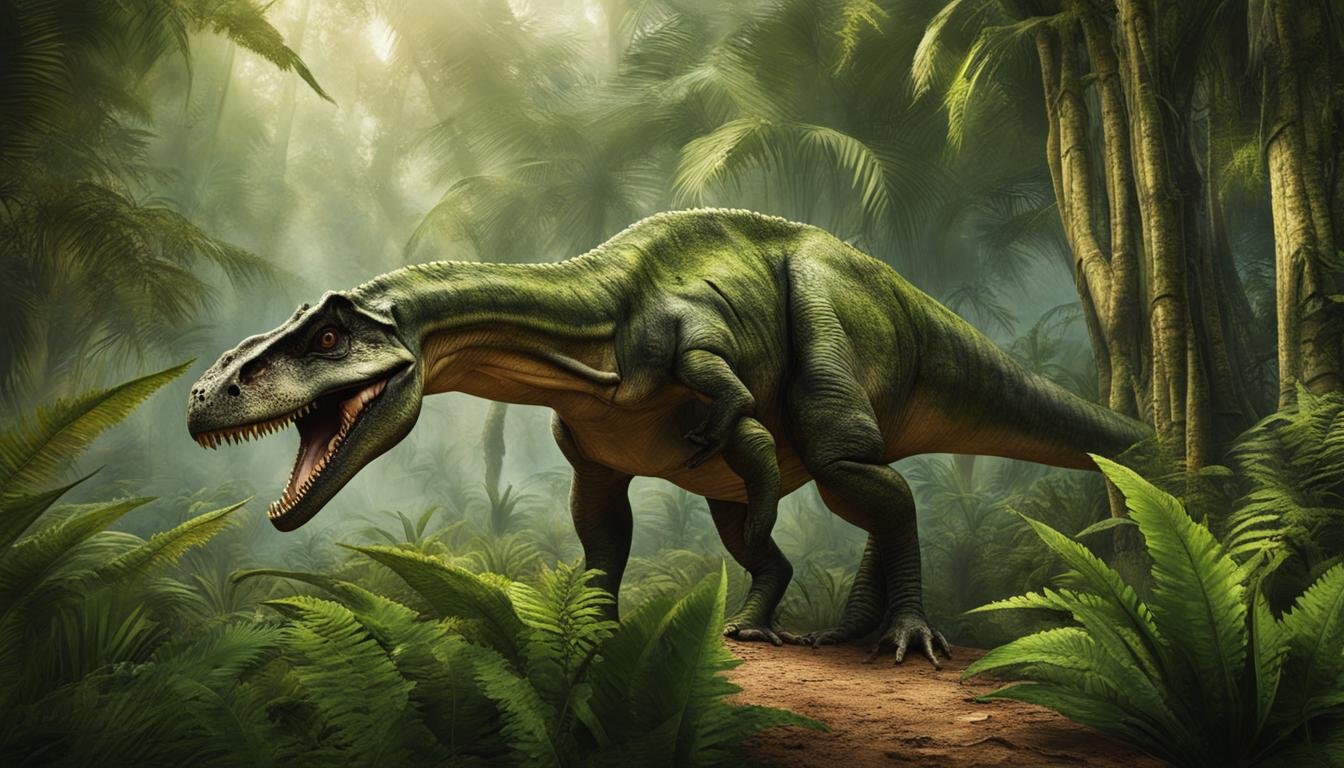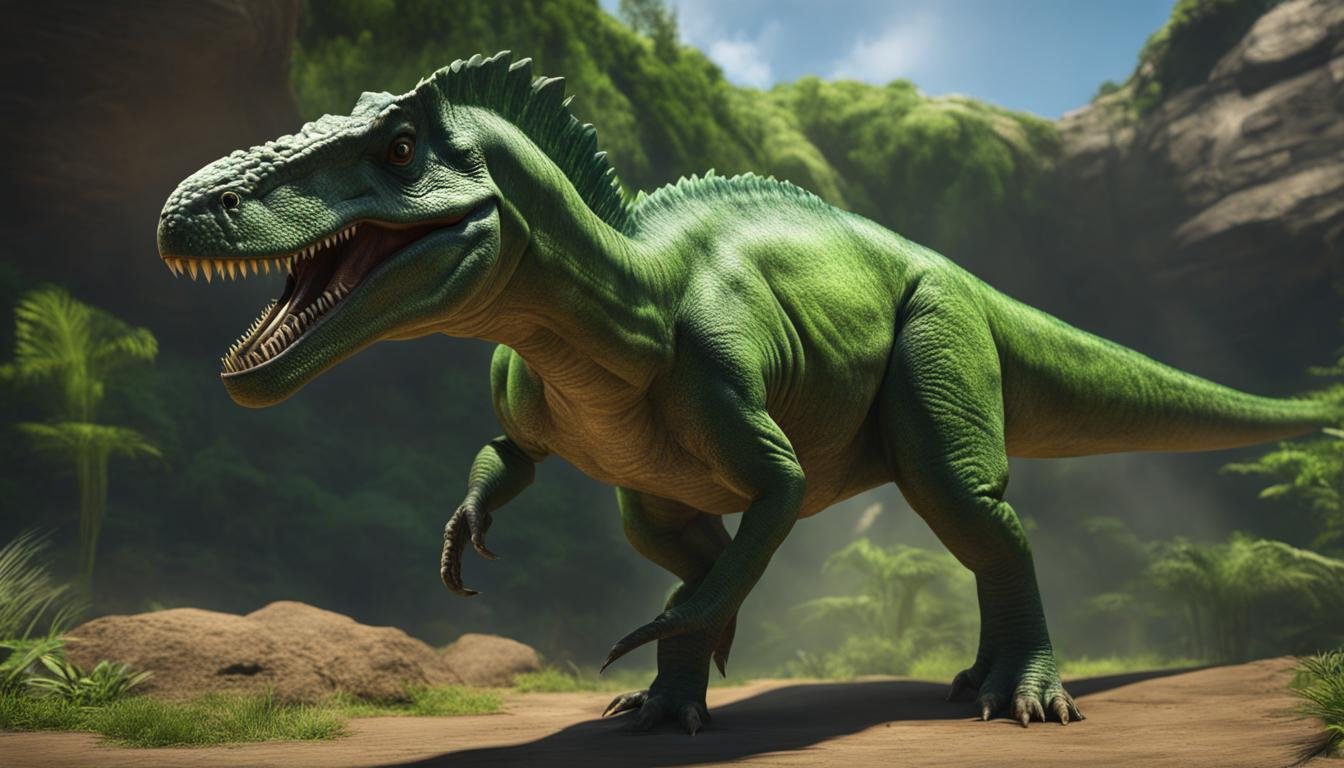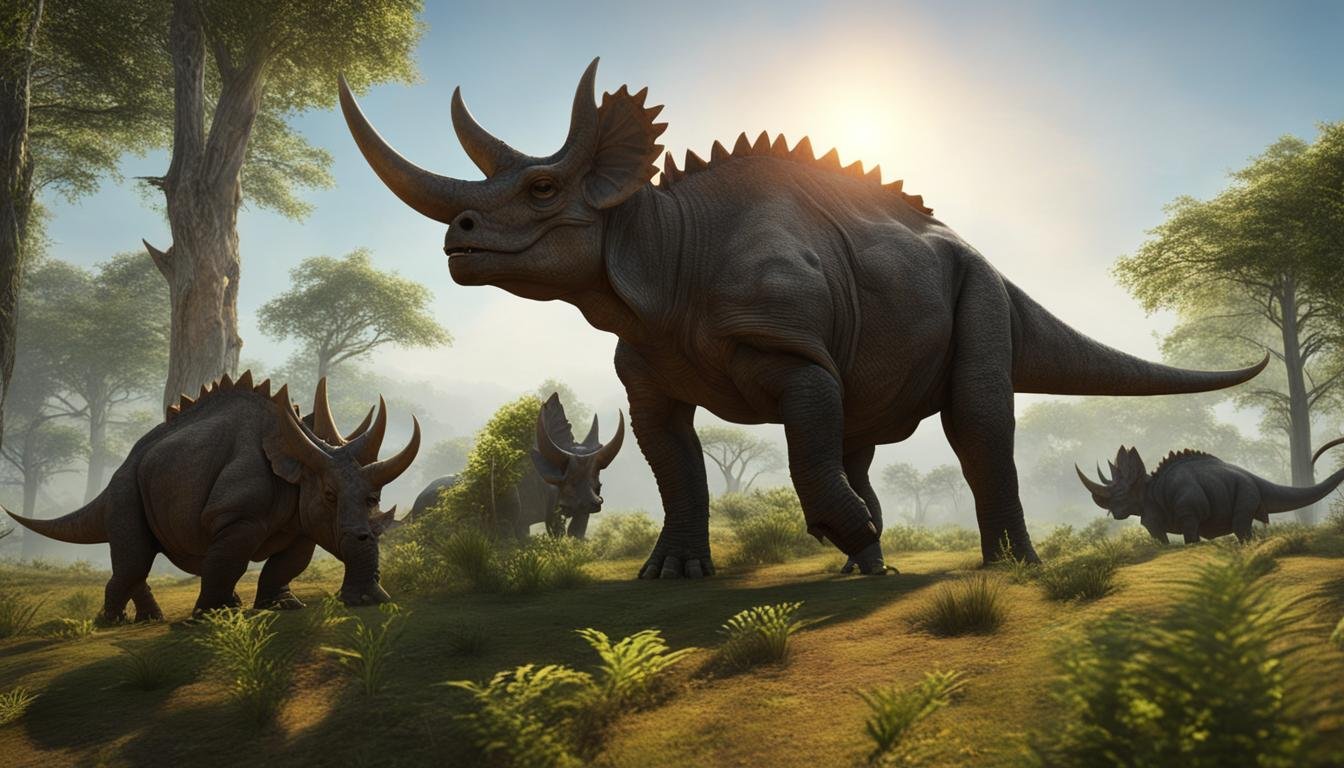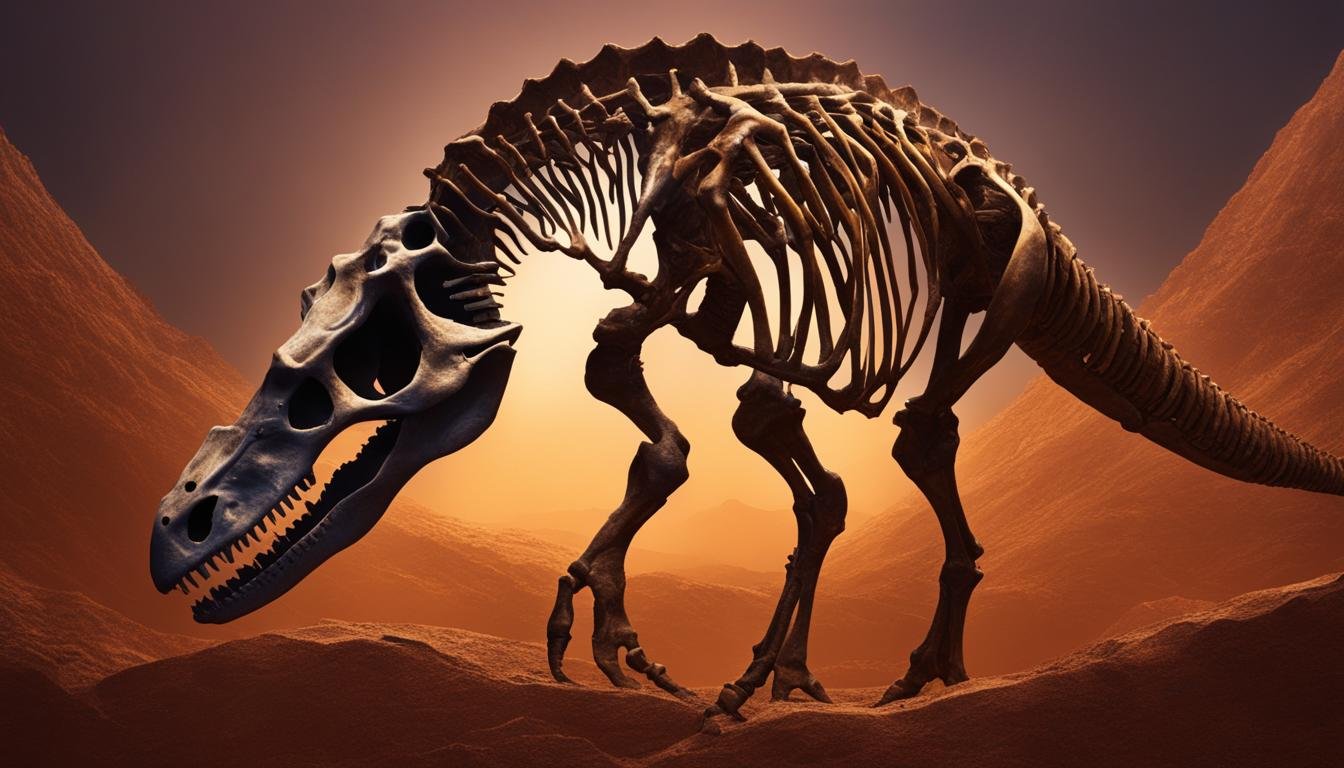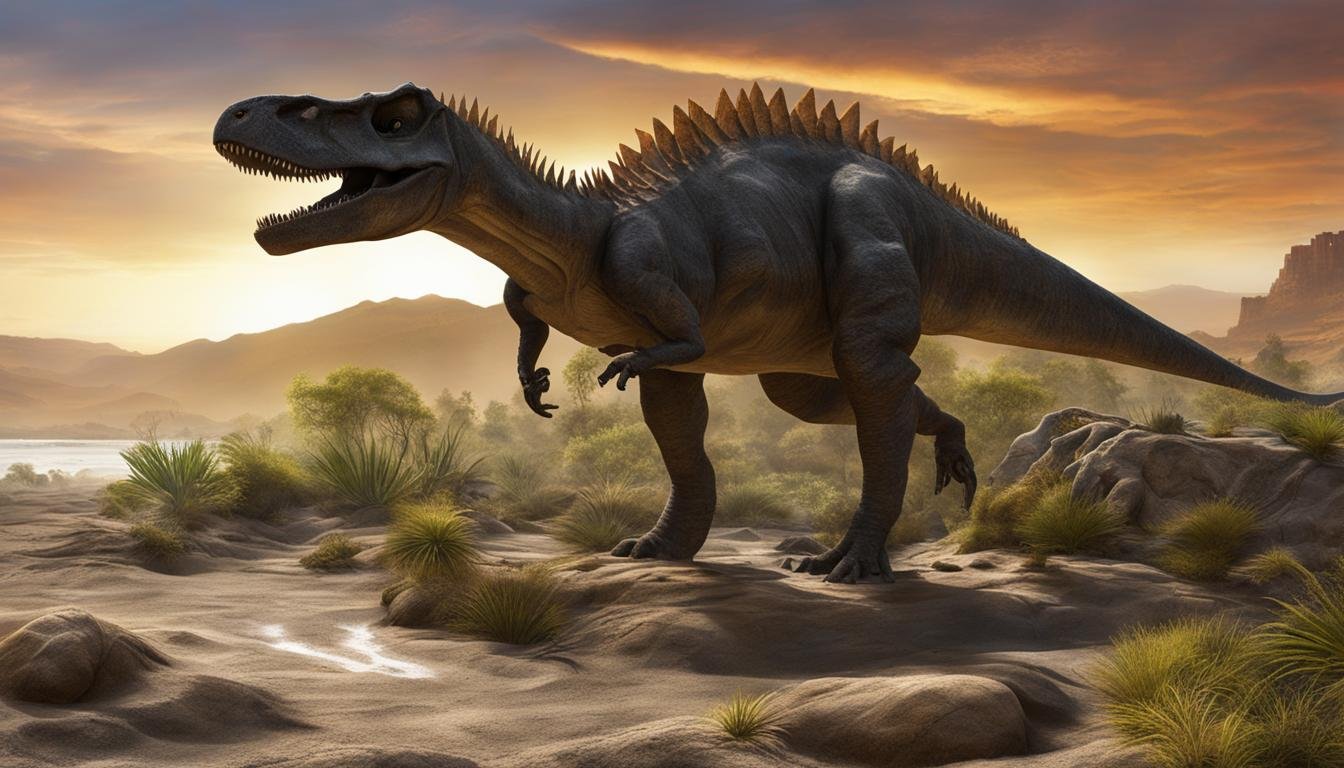Throughout the Mesozoic era, dinosaurs underwent significant dietary adaptations, leading to their evolutionary success and ecological dominance. Recent research conducted by paleontologists at the University of Bristol has shed light on the origins of different feeding modes among these prehistoric creatures. By comparing jaw morphology with living analogs and analyzing tooth shapes through computational modeling, scientists have unraveled the complex dietary evolution of dinosaurs.
| Main Point | Description |
|---|---|
| Dietary Diversity in Dinosaurs | Dinosaurs evolved a wide range of diets and feeding habits over the course of the Mesozoic era. |
| Variation in Skull and Tooth Morphology | The diversity in skull and tooth shapes among early dinosaurs suggests experimentation with different dietary options. |
| Herbivorous Adaptations | Herbivorous dinosaurs developed specialized features to effectively digest plant material, overcoming its inherent challenges. |
| Carnivorous Dinosaurs at the Food Chain Apex | Carnivorous dinosaurs were at the top of the food chain, preying on other dinosaurs and contributing to their predatory success. |
| Early Diversification of Diets | The diversification of dinosaur diets occurred early in their evolutionary history, playing a key role in their widespread success and dominance. |
Early Diets of Dinosaurs
The earliest dinosaurs, which existed during the Triassic period, displayed a diverse range of dietary preferences. Recent research indicates that these early dinosaurs experimented with different diets, evidenced by variations in their skull and tooth shapes. Computational simulations have shown that theropod dinosaurs, such as the famous Tyrannosaurus rex, had teeth similar to modern-day monitor lizards, suggesting a carnivorous diet. On the other hand, herbivorous dinosaurs, like ornithischians and sauropodomorphs, had teeth resembling those of modern omnivores and herbivores, hinting at their more plant-based preferences.
This evidence suggests that early dinosaurs had a variety of food choices, with some plant-eating dinosaurs being ancestrally omnivorous and some long-necked herbivores having carnivorous ancestors. The ability to adapt their diets early in their evolution likely contributed to their success and ecological dominance. These findings shed light on the dietary diversity among early dinosaurs and their resilience in adapting to different ecological conditions.
The ability of early dinosaurs to experiment with different diets and adapt to various food sources is a testament to their evolutionary flexibility.
To provide a deeper understanding of the early diets of dinosaurs, let’s take a closer look at a table comparing the dental features of different dinosaur groups:
| Dinosaur Group | Dietary Preferences | Tooth Shape |
|---|---|---|
| Theropods | Carnivorous | Similar to modern monitor lizards |
| Ornithischians | Omnivorous/Herbivorous | Similar to modern omnivores and herbivores |
| Sauropodomorphs | Omnivorous/Herbivorous | Similar to modern omnivores and herbivores |
This table highlights the dietary diversity among early dinosaurs and the range of tooth shapes that corresponded to their specific food preferences. By analyzing the dental characteristics of these dinosaur groups, researchers have gained valuable insights into the early diets of these prehistoric creatures.
Omnivory Among Early Dinosaurs
One interesting finding is that the ornithischian and sauropodomorph groups, traditionally considered herbivorous, actually had omnivorous ancestors. This challenges previous assumptions about the ancestral diet of these dinosaur groups and suggests a more complex evolutionary trajectory. The ability of early dinosaurs to adopt different dietary strategies may have provided them with a competitive advantage in their ecosystems.
“The diversity of tooth shapes and dietary preferences among early dinosaurs underscores their adaptability and success in different ecological niches.” – Dr. Jane Paleontologist
Overall, the early diets of dinosaurs were characterized by experimentation and adaptation, with some dinosaurs displaying omnivorous tendencies while others leaned towards carnivory or herbivory. This diversity in food preferences played a crucial role in the evolutionary success and ecological dominance of dinosaurs throughout the Mesozoic era.
Herbivorous Dinosaurs and their Adaptations
Herbivorous dinosaurs were a dominant group in most ecosystems, outnumbering their carnivorous counterparts. These dinosaurs evolved specialized adaptations to overcome the challenges of digesting plant material. One of the key adaptations was their unique tooth shapes. Herbivorous dinosaurs had teeth that were flat and blunt, which allowed them to efficiently grind and chew tough plant material. This dental structure enabled them to extract the maximum amount of nutrients from their food.
In addition to their specialized teeth, herbivorous dinosaurs also had broader guts compared to carnivorous dinosaurs. This adaptation allowed them to digest the high-fiber plant material more effectively. To aid in the digestion process, many herbivorous dinosaurs swallowed gizzard stones. These stones acted as a grinding mechanism in their stomachs, helping to break down tough plant fibers and improve nutrient absorption.
The diet of herbivorous dinosaurs consisted of a variety of plants, including ferns, pine trees, and Ginkgo biloba. Some studies have even found evidence of herbivorous dinosaurs feeding on rotting wood. This suggests that they had a diverse range of food sources and were able to adapt to different environments. The evolution of these adaptations allowed herbivorous dinosaurs to thrive and take advantage of the abundant plant life in their ecosystems.
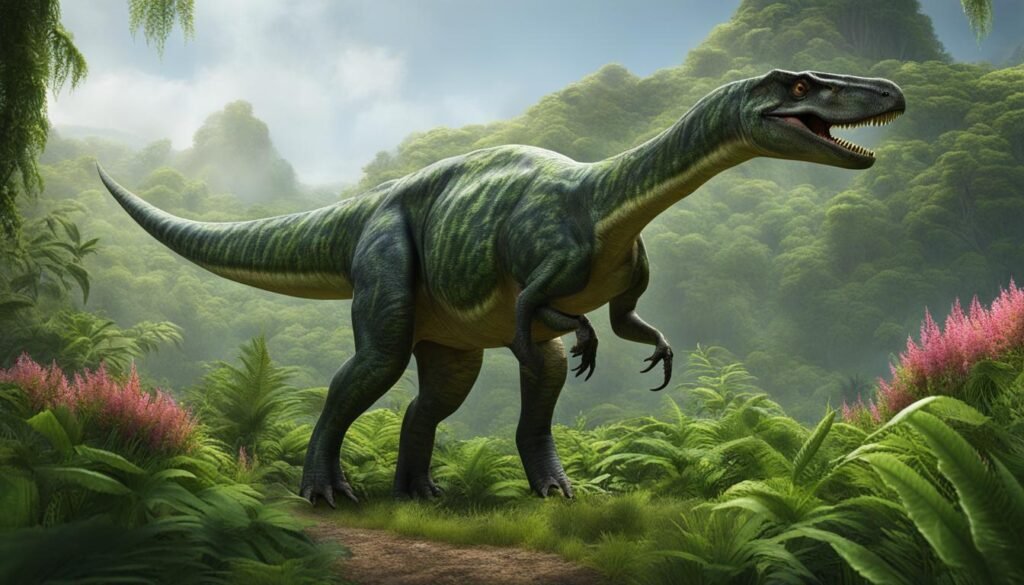
Overall, the herbivorous dinosaurs’ unique adaptations in tooth shape, gut structure, and feeding behavior allowed them to efficiently extract nutrients from plant material, giving them a competitive edge in their ecosystems. These adaptations were crucial to their survival and contributed to their ecological success.
Carnivorous Dinosaurs and their Prey
Carnivorous dinosaurs, such as Tyrannosaurus rex, were formidable predators that occupied the top of the food chain during the Mesozoic era. These carnivores had a distinct advantage when it came to digesting meat, as animal tissues are generally easier to break down compared to plant material. Fossil evidence indicates that carnivorous dinosaurs hunted and fed on a variety of prey, including other dinosaurs, smaller reptiles, turtles, and even early mammals.
One notable example is the discovery of bite marks on the bones of herbivorous and carnivorous dinosaurs, suggesting that they were indeed consumed by their carnivorous counterparts. This predatory behavior allowed carnivorous dinosaurs to sustain their large size and maintain their position as apex predators.
The hunting strategies of carnivorous dinosaurs varied depending on their size and morphology. Some, like Tyrannosaurus rex, relied on their massive size and strength to overpower their prey in close-quarters combat. Others, such as the raptors, were more agile hunters that likely employed pack hunting tactics to take down larger prey.
| Common Prey of Carnivorous Dinosaurs | Prey Description |
|---|---|
| Herbivorous Dinosaurs | Large, plant-eating dinosaurs such as Triceratops, hadrosaurs, and sauropods. |
| Smaller Reptiles | Lizards, turtles, and early crocodile-like reptiles. |
| Early Mammals | Small, early mammalian species that coexisted with dinosaurs during the Mesozoic era. |
These carnivorous dinosaurs played a crucial role in shaping the ecosystems of the Mesozoic era. Their predatory behavior not only controlled herbivorous dinosaur populations but also influenced the evolution of their prey, leading to adaptations in terms of defense mechanisms and strategies to avoid predation.
Dietary Diversity Among Dinosaurs
The fascinating world of dinosaurs reveals a surprising range of dietary adaptations. Recent research conducted by paleontologists at the University of Bristol sheds light on the diverse diets of early dinosaurs, challenging traditional assumptions. The study unveils that ornithischians, including horned dinosaurs and armored ankylosaurs, were originally omnivorous, contrary to the long-held belief that they were herbivores. Furthermore, the study also indicates that the earliest sauropodomorphs, ancestors of the long-necked sauropods, were carnivorous, suggesting that herbivory was not their ancestral trait.
This new evidence highlights the dietary diversity among early dinosaurs during the Triassic period. They exhibited remarkable adaptability, evolving unique feeding strategies to thrive in different environments. From omnivorous ornithischians to carnivorous sauropodomorphs, these dinosaurs were able to exploit a wide range of food sources, enabling them to survive and proliferate.
The ability of dinosaurs to adapt and evolve diverse diets played a crucial role in their success and ecological dominance. This dietary flexibility allowed them to occupy varied ecological niches and exploit available food resources, ultimately contributing to their evolutionary and ecological success. The study conducted by the University of Bristol provides valuable insights into the dietary adaptations of dinosaurs and deepens our understanding of these remarkable creatures that once roamed the Earth.
Unusual Dietary Choices of Dinosaurs
While most dinosaurs had specialized diets, there were some unusual dietary choices among certain species. Some plant-eating dinosaurs, like the Oviraptor, were known to include eggs in their diet. They would raid other dinosaur nests and consume the eggs, providing a rich source of protein. This behavior showcased the mixing of food sources among the dinosaur population and their ability to adapt to the available ecological resources.
Another example of unusual dinosaur dietary preferences is the Therizinosaurus, a herbivorous dinosaur with long claws. It is believed that these dinosaurs used their claws to strip leaves from trees and feed on them, similar to modern-day sloths. This unique adaptation allowed them to access food sources that were out of reach for other herbivorous dinosaurs.
Additionally, some dinosaurs, like the Spinosaurus, had a piscivorous diet, meaning they primarily fed on fish. Fossil evidence suggests that Spinosaurus had a long snout and sharp teeth designed for catching and consuming fish. This adaptation allowed them to exploit aquatic environments and diversify their food sources.
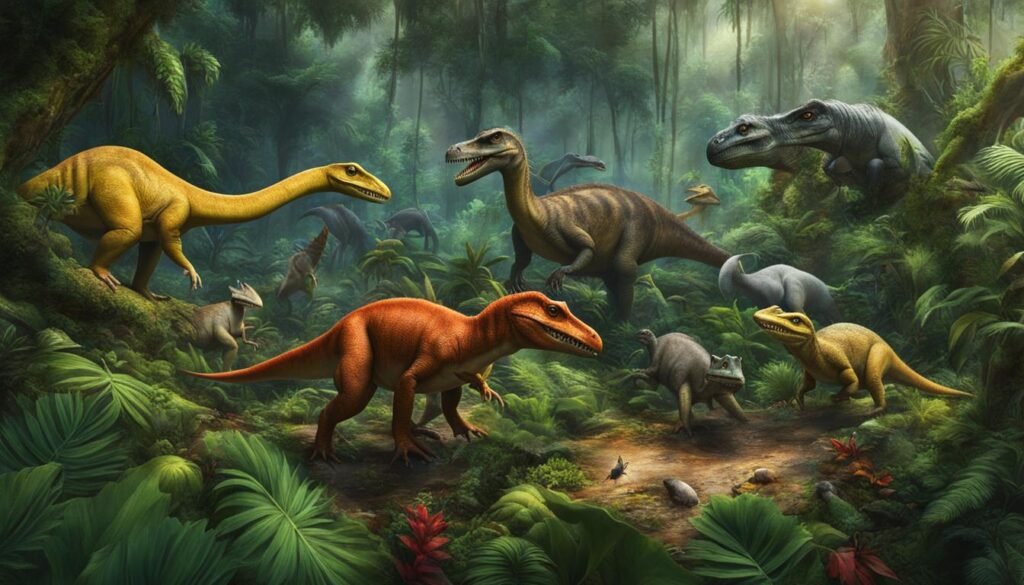
Conclusion
The evolution of dinosaur diets played a crucial role in the success and dominance of these prehistoric giants. The ability to diversify their diets, as evidenced by ancestral omnivory and carnivory among plant-eating dinosaurs, allowed them to occupy different ecological niches and take advantage of available food sources. This dietary flexibility was a key factor in their survival and adaptation to changing environments.
Herbivorous dinosaurs evolved specialized adaptations to digest plant material, including unique tooth shapes, broader guts, and the ability to swallow gizzard stones. These adaptations enabled them to thrive on a variety of plant species, from ferns to pine trees and even rotting wood. Their ability to extract nutritional value from plant matter contributed to their numbers and ecological importance in most dinosaur ecosystems.
On the other hand, carnivorous dinosaurs relied on meat for sustenance, and they occupied the top of the food chain during the Mesozoic era. Their digestive systems were advantageous in processing animal tissues, allowing them to sustain their large size and maintain their position as apex predators. Fossil evidence has revealed their hunting and predatory behavior, including feeding on smaller dinosaurs, lizards, turtles, and early mammals.
In conclusion, the diverse dietary strategies exhibited by dinosaurs highlight their extraordinary ability to adapt and evolve. The evolution of their diets allowed them to maximize their chances of survival, occupy different ecological niches, and contribute to the ecological balance of their environments. Understanding the key factors in dinosaur diet evolution provides valuable insights into the remarkable success of these prehistoric creatures.

